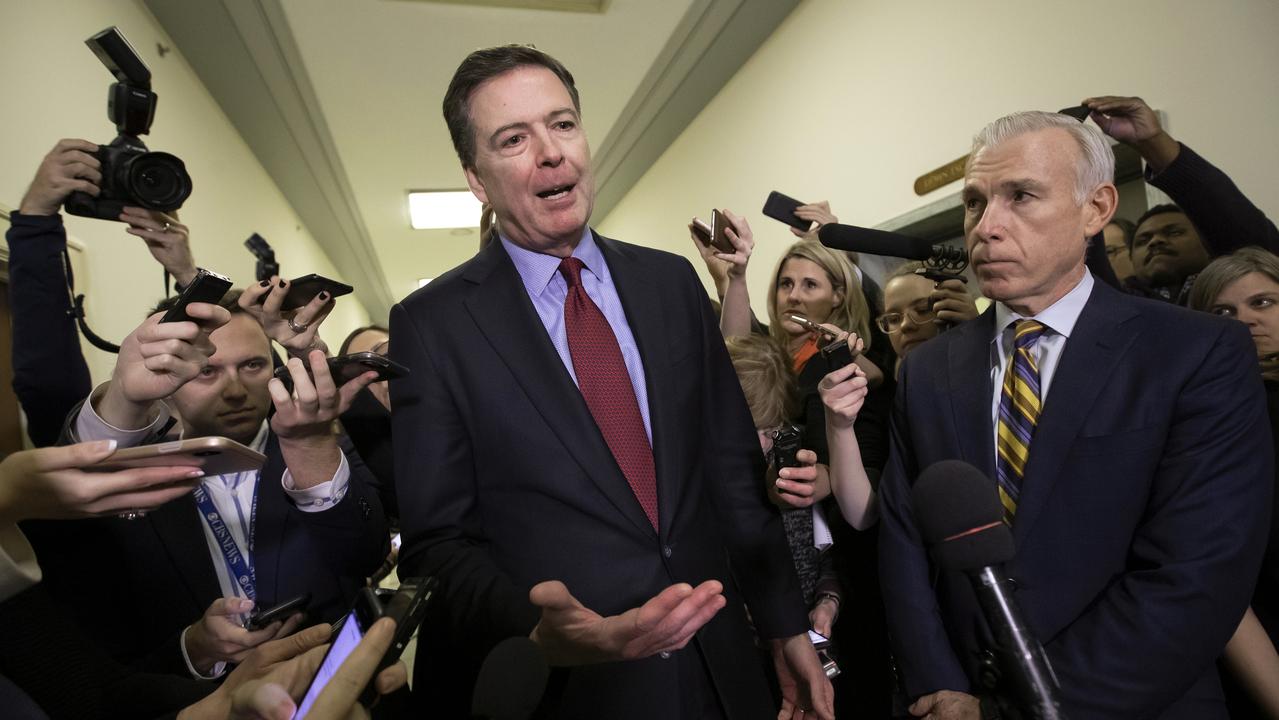
The sight of troops patrolling streets across Britain as well as urban centres, on high alert after this week’s Manchester Arena bombing, is a vision of what may be in store for many European cities as Islamic State’s territorial “caliphate” in Syria and Iraq collapses and the group shifts to a new mode.
Iraqi forces, backed by US and Australian trainers, coalition air strikes and artillery, are fighting to clear Islamic State from Mosul. The group is reduced to a few strongholds in the old city, a dense warren of streets west of the Tigris river. In Syria, Kurdish and Arab fighters are closing in on the group’s de facto capital at Raqqa, while the Assad regime and its Iranian and Russian sponsors target Islamic State’s enclave near Deir ez-Zor. In Libya, Islamic State is being squeezed from multiple directions by several Libyan factions, and US special operations forces are expanding their reach in other parts of Africa.
All this puts Islamic State under serious territorial pressure, and means that the central “caliphate” — the state-like entity that emerged in Iraq and Syria after its blitzkrieg of 2014 — has probably only a few months left in its present form. Most observers believe combat in Mosul will last until at least July, and will be followed by months-long security operations to stabilise the city. The battle for Raqqa may last somewhat longer.
Some reports place Islamic State leader Abu Bakr al-Baghdadi in Mosul, while others suggest he has fled the city with key leaders. Either way, his days as ruler of a pseudo-state — with population, territory, a functioning economy and an overt military force — are all but over. But the collapse of the territorial caliphate will not destroy the Islamic State — far from it.
Rather, most analysts expect the group to find new havens on the Iraqi-Syrian border, go underground in cities across the region, destabilise neighbouring countries such as Lebanon and Jordan, and shift back to guerilla mode. It will maintain clandestine networks, preserve its hideouts and terrorist cells, and begin rebuilding, as it has done before. Of more immediate concern is that the collapse of Islamic State in Iraq and Syria will not reduce the terrorist threat in Western cities — on the contrary, it will almost certainly increase the threat.
In part, this is because of a pattern observed since 2014, whereby territorial losses have repeatedly driven Islamic State to strike Europe, the US and Africa. After the group lost the Iraqi city of Tikrit in April 2015, it launched deadly simultaneous attacks in Tunisia, Kuwait and France. After its loss of Ramadi in late 2015, there were attacks in France and Belgium; and as Iraqi forces closed in on Mosul, the group’s spokesman, Abu Mohammed al-Adnani, called for supporters to launch attacks on all coalition countries in retaliation.
Revenge is not the only motivation: Islamic State has consistently applied what some observers call a “centrifugal strategy”, responding to pressure against its strongholds with counter-attacks in multiple distant places. These are designed to distract opponents, force them to divert troops to guard rear areas, and prevent them from massing forces. In attacking Western countries, the goal is deterrence through shock: mounting horrific mass casualty attacks (as in the Paris attacks of 2015), or striking public places (the Bastille Day parade in Nice, Brussels Airport or the Berlin market last year) to undermine public support for continued involvement in the coalition.
Not every attack originates from the central organisation. Self-radicalised individual supporters can initiate revenge attacks on their own. Omar Mateen, for example, claimed he was attacking the Pulse nightclub in Orlando, Florida, in revenge for a US air strike in Iraq that killed Abu Waheeb al-Dulaimi, an Islamic State fighter.
The sister of Salman Abedi, this week’s Manchester bomber, claims he sought revenge for the deaths of Muslim children in Syria.
Khalid Masood, who launched the Westminster attack in March, claimed to be seeking revenge for Western involvement in the Middle East. Islamic State subsequently claimed him as one of its soldiers, as it did in the case of Abedi.
In Masood’s case, British police doubt Islamic State had any foreknowledge of the attack; that said, we are past the point where this makes much difference. Individuals acting in the name of Islamic State can be exploited in the group’s propaganda and used to support its narrative, irrespective of whether the organisation directly assists in the planning. Indeed, the whole point of Islamic State’s evolving operational technique of “leaderless jihad” is to give ad hoc networks and self-motivated individuals the tools and techniques to act independently, then sit back and take the credit.
What we know about Abedi so far suggests that the Manchester attack sits somewhere in the middle ground between the sophistication of, say, the Paris or Brussels attacks and the terrorism of lone actors such as Mateen and Masood.
British police have arrested 11 people in connection with the attack. Libyan authorities have detained others, and — perhaps the most compelling evidence that Abedi was part of a wider network — intelligence agencies believe he arrived in Britain from Libya less than 48 hours before the attack, picking up an explosive device that was probably prepared by someone else ahead of time. This may or may not indicate direct involvement by Baghdadi’s group, but it certainly suggests an underground network close to the target.
Such networks are fairly widespread in Europe, according to intelligence agencies. Separate estimates by German and French security intelligence services suggest that 500 Syria-trained Islamic State operatives are active in Western Europe. Since 2015, Europe’s mass migration crisis has provided cover for these combat-experienced and highly motivated cadres to infiltrate the continent. Many European states — including France, Britain, The Netherlands, Belgium and several Scandinavian countries — also have immigrant populations vulnerable to radicalisation, which can be exploited as additional camouflage for terrorist operators.
Of these (including refugees, many of whom are fleeing extremism) only a tiny proportion represents any kind of threat. Indeed, one of the most pernicious effects of terrorism is that it often turns mainstream opinion against minorities, exacerbating the alienation and marginalisation that makes some individuals vulnerable to radicalisation, and rendering the fear of terrorism self-fulfilling.
Paradoxically, however, the fact most members of a population are innocent can be true and irrelevant, since it takes only a tiny number to sustain a terrorist campaign. To quote just a few European examples, West Germany’s Red Army Faction (the Baader-Meinhof group) never had more than 40 people but still managed a terrorist campaign of almost 30 years, from 1970 until its official disbandment in 1998. The even smaller Revolutionary Cells launched almost 300 terrorist bombings in the same period.
A closer historical analogy would be the Irish Republican Army. The current estimate of 500 active operators, with a recruitment and radicalisation base of about three million, puts Islamic State at roughly the same size as the IRA of the 1980s. That scale of organisation allowed the IRA to sustain for a generation a campaign of violence that included transnational terrorism across Europe, urban unrest and communal violence in Northern Irish cities, and rural guerilla warfare.
The overwhelming majority of Irish Catholics did not support IRA violence but this had little practical effect on its ability to sustain its campaign.
In the same period, the Basque separatist group ETA had only about 300 operatives in Spain and parts of France. It, too, never had support from more than a minority of the Basque population, and drew on a very localised population base — unlike Islamic State, which can access supporters in almost every European country.
Thus, unfortunately, Europe may be in for a sustained campaign of violence across several years, on a scale similar to that of ETA or the IRA. Combined with Islamic State’s known tendency to retaliate for loss of territory with attacks abroad, its presence in Europe is large enough to enable a self-sustaining campaign of urban guerilla warfare.
We can expect two main attack modes. One is that of local spontaneous attacks, generally lo-tech, using knives or vehicles as weapons, or involving mobile “active shooters” rampaging through crowded public places. The other involves pre-planned attacks by underground networks with links to Islamic State’s regional “wilayat” groups, or to what remains of the central caliphate. Nice, Berlin, Westminster, Pulse nightclub and San Bernardino are examples of the first model. This week’s Manchester bombing and the Paris and Brussels attacks of 2015-16 are examples of the second.
The targets attackers are likely to choose are also predictable, based on patterns observed so far. They include large urban venues such as concert halls, sports stadiums, shopping centres, hotels, railway stations and airports. Crowded spaces — especially during public festivities — are especially likely to be attacked since they are soft targets that carry significant shock effect. Attacks are likely to occur outside, or on the fringes of, major venues — something that happened in Paris, Brussels and Westminster, as well as in Manchester this week. That puts police and venue security guards, as well as event security managers, squarely on the frontline.
We should not imagine that attacks such as these couldn’t happen here. Although Australia lacks the large and alienated immigrant populations present in parts of Europe, we have our fair share of radicalised individuals, groups that support Islamic State, vulnerable venues, foreign fighters and underground networks. Particularly in large cities, there are enclaves of support for radical extremism, and links between extremists and criminal networks (such as outlaw motorcycle gangs or organised crime) that allow terrorists to access weapons, cash, documents and hiding places. Australia is, and has long been, a named target of Islamic State, al-Qa’ida, Jemaah Islamiah and other groups, and is likely to remain so.
Likewise, distance in itself is no protection, though Australia’s island status does make it easier to secure than European countries — many of which share, through Turkey, a land border with parts of the “caliphate”. A far more important set of protections, in Australia’s case, comes from comprehensive counter-terrorism legislation with robust legal safeguards, along with effective border and immigration controls. The fact both sides of politics, when in government, have enacted these measures during the past two decades gives them a critically important bipartisan basis.
Of course, information sharing, threat tracking and venue security always can be improved, as can response time. Likewise, we should always be seeking to improve our ability to handle multiple simultaneous incidents or to deal with incidents in quick succession. But the most important thing we can do is to focus on improving personal and community resilience in the face of attacks that are all but inevitable.
Even Manchester, which with London is one of the most heavily monitored areas of urban terrain on the planet, couldn’t prevent the attack despite its citywide network of surveillance cameras and its professional police. Those assets can help quickly identify a perpetrator in the aftermath of an attack, or enable a city to better manage an attack’s consequences, but they can’t directly prevent one.
Venue managers at the Manchester Arena may have been slack in checking bags, as some attendees alleged on Twitter after the attack. This has prompted questions that will almost certainly lead to a public inquiry, which is likely to lead to changes in urban and event security.
Screening is likely to be increased, people will be encouraged to remain alert and report anything suspicious while entering and, especially, leaving venues. Additional restrictions on backpacks may come into force. There may be increased efforts to modify the design of venues and urban spaces in ways that minimise vulnerabilities.
Governments are likely to increase community resilience training and civil defence preparation, and work to integrate and build cohesion with populations vulnerable to radicalisation.
All this makes sense, even if it is quite predictable and pedestrian as a response to the threat. But the bigger picture is that the collapse of the central caliphate — the focus of much Western military effort since 2014 — will not reduce the threat at home but, rather, will likely raise it.
That doesn’t mean Islamic State should not be crushed — it absolutely should, for humanitarian reasons and as an essential step towards stabilising the Middle East and North Africa, areas that are major exporters of terror into Western countries.
But the Manchester bombing, along with the recent string of deadly attacks, suggests that terror in the West (and especially in Europe) has reached critical mass. All the evidence suggests that it has become self-sustaining, and poses an ongoing threat independent of what happens in the region.
We need to prepare ourselves for more Manchesters.




To join the conversation, please log in. Don't have an account? Register
Join the conversation, you are commenting as Logout